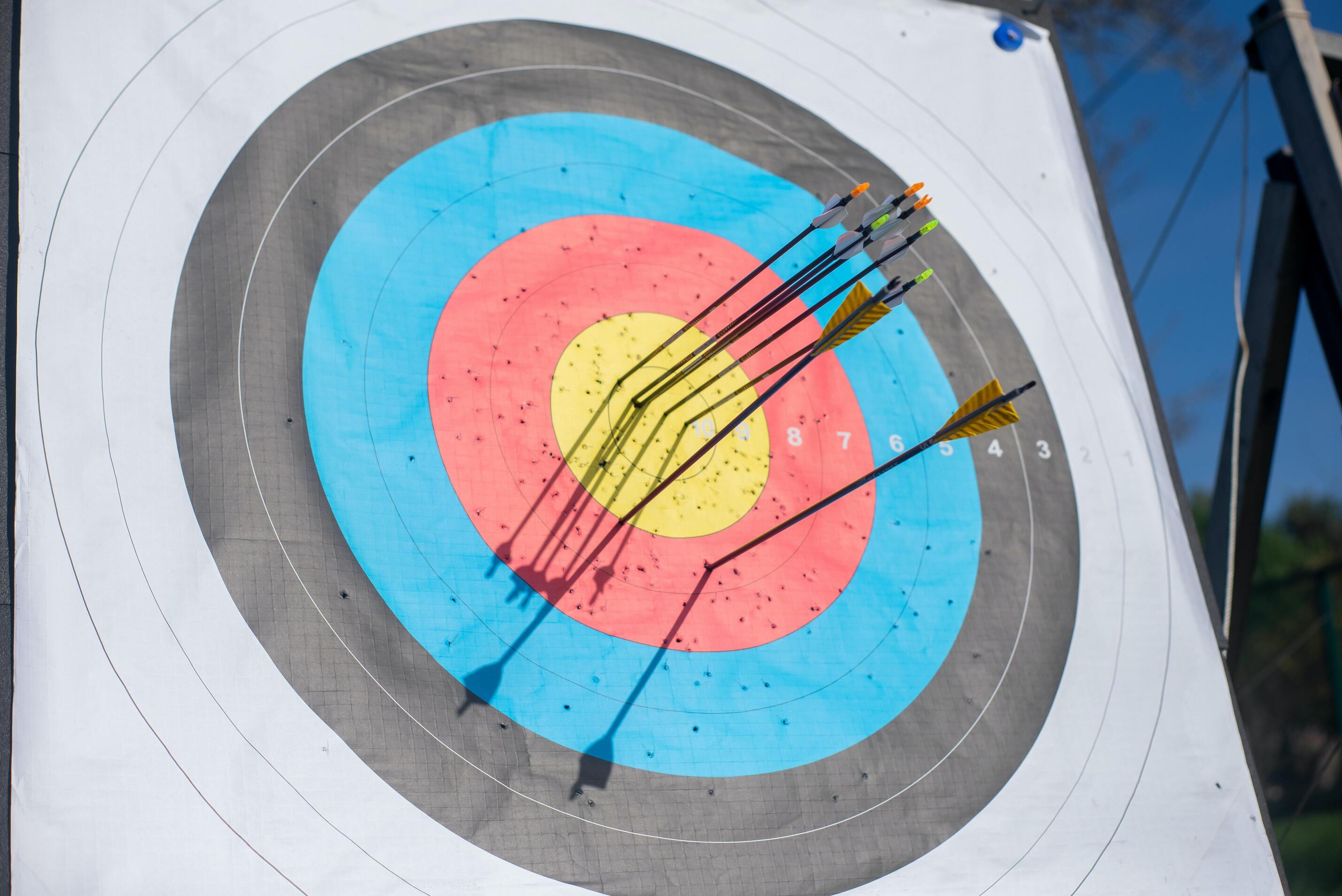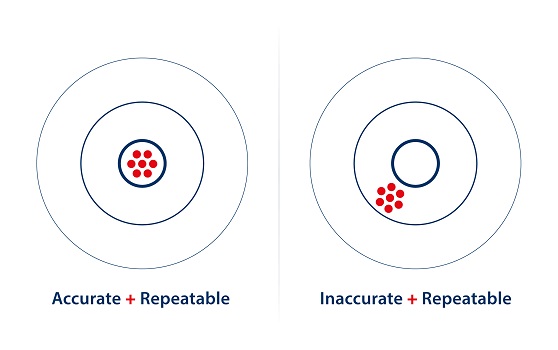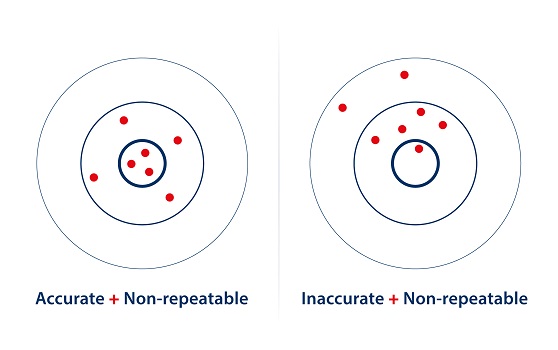Accuracy & Repeatability Flow meters
What is accuracy of a mass flow meter, what is repeatability of a mass flow meter, and what difference does the difference make?
Flow Meter Accuracy

Flow meter accuracy is how close the measurement is to the true value. In flow meters, that means how close the output of the meter is to its calibration curve. This is expressed as a percentage, e.g. ±1%. It means that any given reading can be in error 1% above or below the calibration curve.
In general it can be said; the lower the percentage, the more accurate your flow meter.
 Flow meter Accuracy versus Repeatability
Flow meter Accuracy versus Repeatability
Flow Meter Repeatability
Repeatability is producing the same outcome given the same conditions. In other words, a flow meter should produce the same readings when operated under the same variables and conditions. This, too, is expressed as a ± percentage.
While accuracy usually takes the spotlight in the measurement world, repeatability is the foundation on which accuracy rests. You can have high repeatability without high accuracy but you cannot have high accuracy without high repeatability.
Is accuracy always important?
Well….no, not by definition. But…no one wants an inaccurate meter, but not all applications require high amounts of accuracy. It may be acceptable to stray further from the calibration curve if you are only looking to get an idea of how much is flowing through a pipe. But it isn’t acceptable if you are mixing pharmaceuticals for consumption or volatile elements.
How accurate your meter needs to be is important when selecting a flow meter, because usually the more accurate a flow meter, the higher the price.
When you see an accuracy specification, it should be expressed as a percent of Full Scale (FS) or Reading (Rd or RD). The difference between those can be significant.
 Flow meter Accuracy versus Non-repeatability
Flow meter Accuracy versus Non-repeatability
Our Digital Area Mass Flow Meter the MASS-VIEW: Accuracy and Repeatability

± (1% Reading + 0.5% Full scale) on lower flows
Technical specifications are based on Air at maximum Full Scale